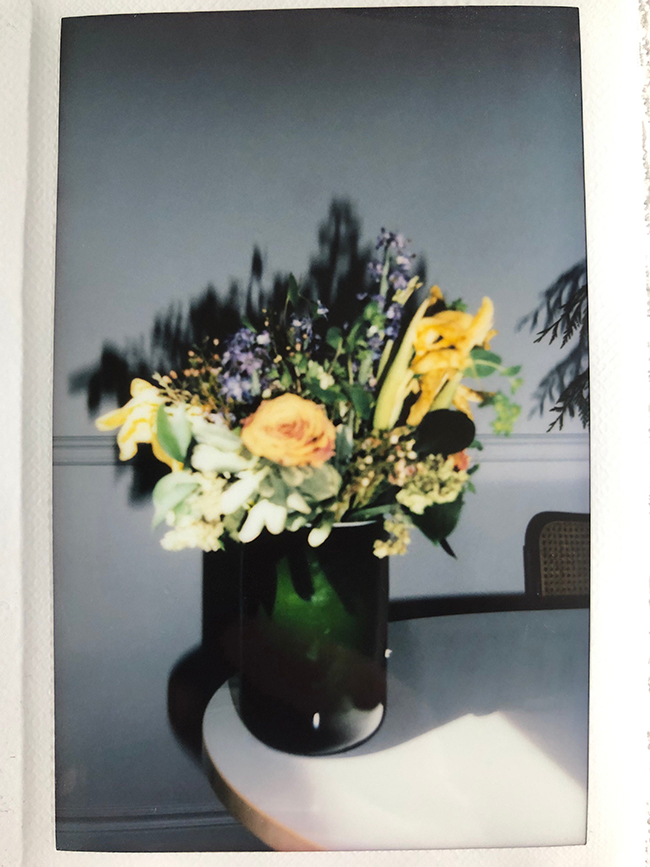DURGA CHEW-BOSE
Has anyone ever asked Martin Scorsese what the flower budget was for The Age of Innocence? Or Stephen Daldry, for The Hours? The way Meryl Streep’s character, Clarissa, sails into a West Village flower shop on a cold winter morning, looking especially purposeful in blue jeans and her hair half up. The way she dips her sunglasses and reasons that lilies are “too morbid” but hydrangeas are exactly right. The way she insists on ordering “buckets of roses.” How she says “buckets of roses” in that arranged, typically Streep depiction of joy, smiling not just with her eyes, but with an intelligence for her face and its tapered eloquence.
And as if those buckets weren’t enough, Meryl scoops up the florist’s entire morning delivery of ranunculus right before she exits the flower shop. It’s a movie-amount of ranunculus, there’s no other way to measure it. Wrapped in brown paper, the flowers look like a giant cannoli. This image of Streep standing beside snow banks is like a Jane Freilicher painting, or maybe, more accurately, this image of Streep is what anticipates a Freilicher painting, before the flowers are brought inside and placed on a windowsill that faces downtown.
Everyone feels like they are in a movie when they return home with flowers. Everyone hopes to be seen crossing the street, holding a bouquet. Everyone looks like they’re running late—even if they’re right on time—when crossing the street, holding a bouquet. Everyone has only one friend who arrives on time, and with flowers. That same friend remains the light version of a mystery; she is known to you, intimately, but at a considered distance, too. Few have seen the inside of her home. When she shares photos, it’s always the same chair or flowers in a vase. This friend possesses an imagination compelled by control. She is intense, but no one would know it, or describe her as such. Awareness and showing up on time (with flowers) are both intense qualities that are explained instead as “reliable,” but being reliable is, actually, really intense. Being thoughtful is actually really intense. Everyone has a friend like this who has spent most of her friendship with you dodging the question, “How are things?” She is also the friend who taught you about carnations, how they last the longest, sometimes two, even three weeks. Everyone has a friend like this, who teaches you which flowers last longest for the price and who knows which drugstore lotion does the trick just fine. She’s also the friend who organizes the group gift. She remembers everyone’s birthdays. She arrives on time with a bouquet. She has a really good trench coat; smart, not too long, perfect with an ankle. She bought it because she saw one, just like it, in a movie. And it’s nice to arrive places and receive a compliment, and have a line ready about—not life, nor your commute—but a movie.
Speaking of movies and flowers. Apparently, Hitchcock chose Podesta Baldocchi—the flower shop in Vertigo near Union Station, besieged with gladiolas and pink roses—because he liked the Italian tiled floor. That’s a nice thought: to bet on flooring when the main event was flowers, or Kim Novak. Her two-piece grey suit. Her stillness, her spiraled coif. Her strange aspect. The way she sucks you in and lingers in the air like a perfume you’ve only encountered once in your life. It’s a performance that comes with the Italian tiled floor, because Hitchcock knew to film her full-length among the flowers; her stems among those stems. And that grey suit—how Hitchcock invented a world where flowers in big, beautiful bloom are expected to compete with, of all things, the color grey.

—
Durga Chew-Bose is a writer and editor. Her first book of essays TOO MUCH AND NOT THE MOOD (Farrar, Straus & Giroux) was published in 2017.
